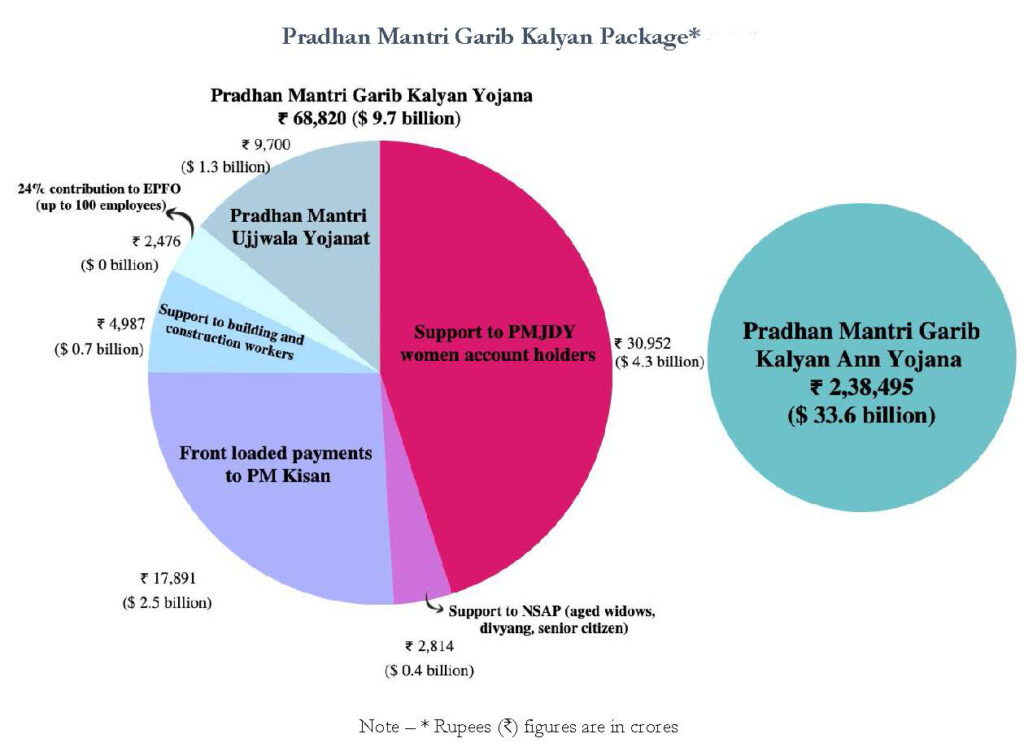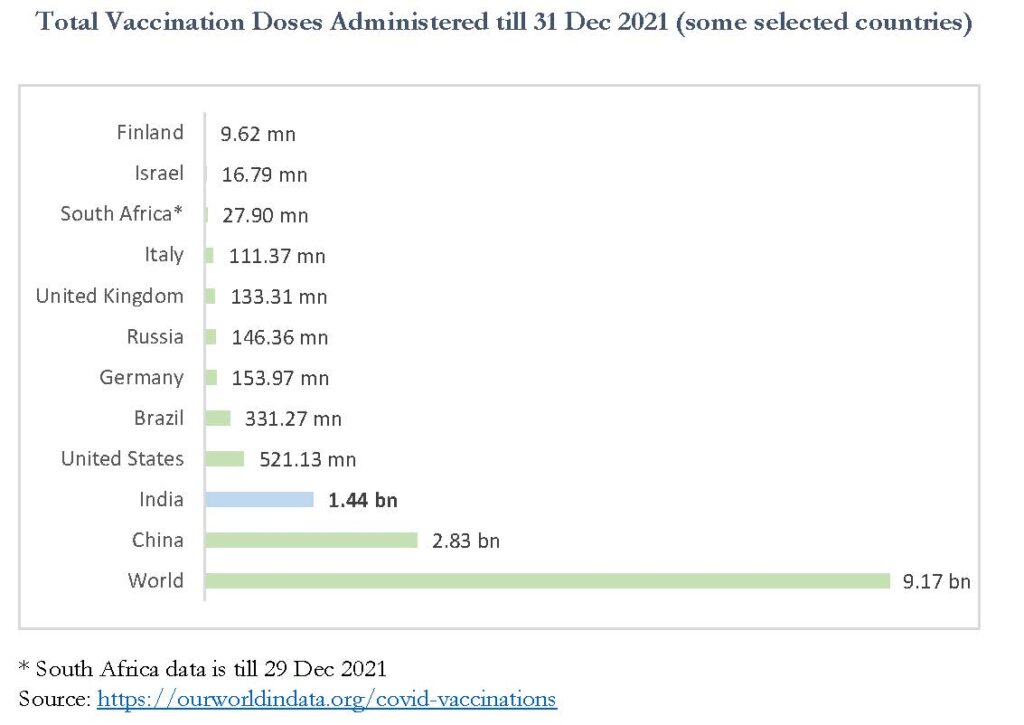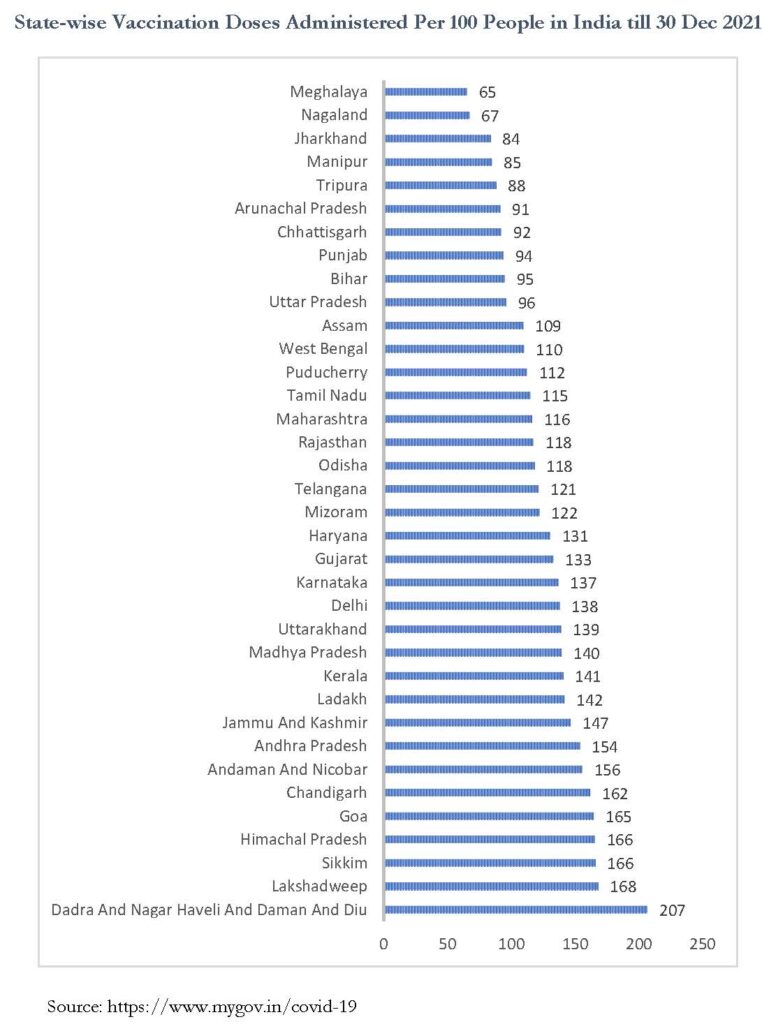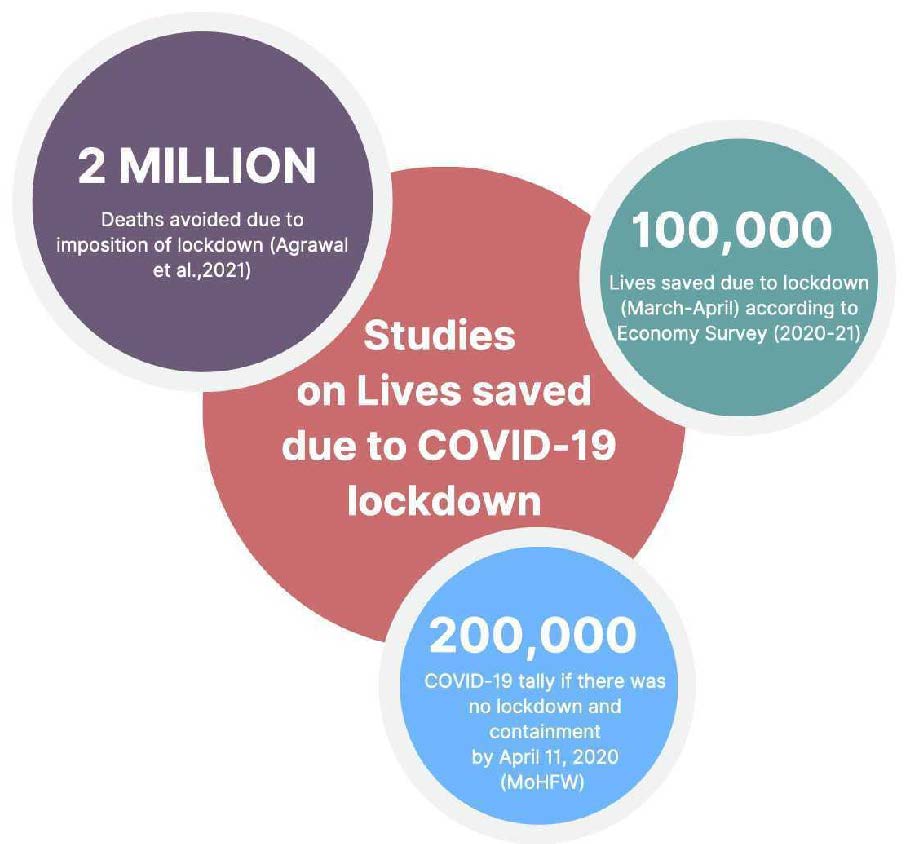Health Minister Mansukh Mandaviya releases draft report, which says that the imposition of lockdown avoided 20 lakh deaths.
NEW DELHI: Due to the strategy put in place by the Indian government, including among other measures, undertaking a nationwide Covid-19 vaccination campaign at an unprecedented scale, saved the lives of close to 34 lakh people. This is been claimed by a “working paper” that was presented by two employees of the California based Stanford Institute which was released by Health Minister Mansukh Mandaviya on Friday during a session of the virtual dialogue, “The India Dialog” which was organised by Institute for Competitiveness and US-Asia Technology Management Center, Stanford University.
As per the working paper, which is a “draft report”, it does not “necessarily represent the position of the university”. As per the report, the Covid vaccination campaign initiated by the government yielded a positive economic impact by preventing a loss of USD 18.3 billion.
According to it, the three cornerstones of India’s strategy—containment, relief package and vaccine administration—played a key role in tackling Covid-19 threat while stating that against the top-down approach, a bottom-up approach was critical in containing the virus.
The report states that robust measures at the ground level, like contact tracing, mass testing, home quarantine, distribution of essential medical equipment, revamping healthcare infrastructure and constant coordination among stakeholders at the centre, state and district levels not only helped contain the spread of the virus but also in augmenting the health infrastructure.


The report claims that a net benefit of USD 15.42 billion to the nation happened after taking into consideration the cost of the vaccination campaign, the report said. The paper has extensively focused on the impact of the lockdown and referred to the Union Ministry of Health and Family Welfare’s statistical analysis that the COVID-19 tally could have reached about two lakh without lockdown by 11 April 2020.
Due to lockdown measures, the actual cases only went up to about 7,500 by 11 April 2020, making a case for the lockdown stronger. The imposition of the lockdown also avoided twenty lakh deaths, it says.
It further mentions that 1 lakh lives were saved due to the lockdown (March-April), according to the Economic Survey (2020-21), and a COVID-19 tally of 200,000 if there was no lockdown and containment by 11 April 2020 “India was able to save more than 100,000 (0.1 million) lives through the lockdown in March-April 2020. Moreover, the country took around 175 days to reach the peak from its first 100 cases while most countries reached their first peak in less than 50 days (Russia, Canada, France, Italy, Germany, etc.),” the report said.


Health minister Mandaviya, while praising the decision of early lockdown by the prime minister as a significant turning point, said that it enabled the government to leverage community response in its five-pronged strategy namely Test, Track, Treat, Vaccination, Adherence for implementing Covid Appropriate Behaviour (CAB) and delivering a rapid and robust institutional response to combat COVID-19.
“The government focused on augmenting health infrastructure in terms of Covid-related beds, drugs, logistics ie, N-95 masks, PPE kits and medical oxygen, simultaneously up-skilling human resources though Centres of Excellences and deploying digital solutions such as eSanjeevani Telemedicine service, Aarogya Setu, COVID-19 India Portal etc. Equal weightage was given to scaling up the testing infrastructure at an unprecedented rate exceeding the superlative figure of 917.8 million tests conducted. Additionally, a network of 52 labs for genomic surveillance was established for monitoring emerging variants of the virus,” he said.
According to him, building on the above mentioned momentum, India launched the world’s biggest vaccination drive, garnering a coverage of 97 per cent first dosage and 90 per cent of the second dosage, administering 2.2 billion doses in all for eligible beneficiaries.
“The drive focused on equitable coverage for all, hence vaccines were provided free of cost to all citizens.Campaigns and digital tools such as ‘Har Ghar Dastak’, mobile vaccination teams as well as the inception of Co-Win vaccine management platform were leveraged to ensure last-mile delivery,” Mandaviya said.
As per Mandaviya, one of the most defining factors in the success of pandemic management in India was allaying fears, managing misinformation and infodemic in the community through targeted Information, education and communication.
The report also mentions that the benefits of vaccination exceeded its cost and suggested that vaccination be considered a macroeconomic stabilising indicator contrary to just a health intervention.
“The cumulative lifetime earnings of the lives saved through vaccination (in the working age group) tolled up to USD 21.5 billion,” it claims.
As per it, “The development of vaccines (COVAXIN and Covishield) helped fight the country the pernicious attack of the virus and not only inoculate a large number of people but also decrease the burden on healthcare system.”
Commenting on the social benefits of the government of India’s response to the pandemic, the paper says that it helped mitigate many problems that the poor people were facing.
“It cannot be refuted that the general public was affected mostly by the pandemic. Masses of people got devoid of basic amenities like food, shelter, and health with the slowdown in economic activity and many also lost their jobs as a consequence of the slowdown with businesses trying to lower costs due to dampened demand. All this even led to a large number of migrants to reverse migrate. Therefore, the government had a large problem at hand to not only stop the reverse migration process but to also help millions of others who were devoid of the basic amenities. Against this backdrop, the government launched the Pradhan Mantri Garib Kalyan Package for the poor to help them fight the battle against the atrocities of pandemic,” it found.
Elaborating on it further, the authors said that “The Pradhan Mantri Garib Kalyan Yojana (PMGKY) was a comprehensive scheme including multiple initiatives ranging from Jan Dhan Accounts to PM Kisan to EPFO contribution, among others. Excluding the Ann Yojana, the PMGKY amounted to Rs 68,820 crore ($ 9.7 billion). On the other hand, the Pradhan Mantri Garib Kalyan Ann Yojana was a scheme encompassing the distribution of free food grains to people over and above what they had already received. This latter involved the distribution of free food grains to approximately 80 crores (800 million) people,” the paper states.

